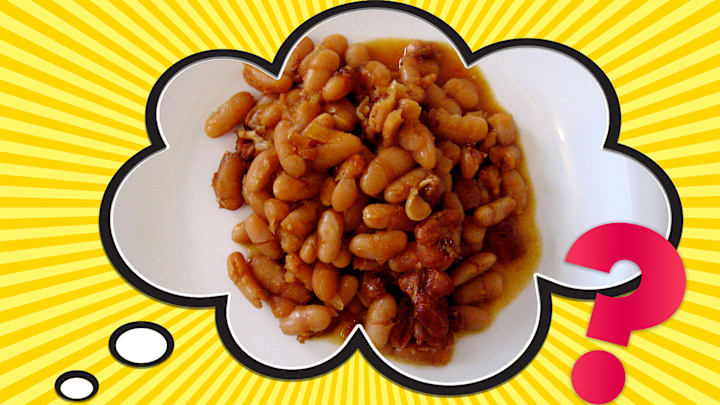Boston has been called “Beantown” for more than a century. And it isn’t because it’s known for its coffee. The association actually stems from Boston baked beans, a dish that’s now intrinsically linked to the area.
From Puritan cookery to candy-coated peanuts, Boston baked beans have had quite a journey. So how did this humble dish get tied so tightly to Massachusetts?
What Are Boston Baked Beans?
Boston baked beans trace their lineage back to medieval Europe, where bean-and-bacon pottages kept villagers full through long winters. When Puritans arrived in Massachusetts Bay in the 1600s, they adapted the dish using what they had on hand: dried beans, salt pork, and, eventually, molasses (some also claim that Indigenous tribes in the area made bean dishes that included maple syrup and bear fat, which the colonists tweaked to suit their needs).

The Puritans loved baked beans for a very specific reason: They could set a pot to cook on Saturday and have food ready for Sunday, a day when work (including cooking) was forbidden. Archaeologists even found evidence of this habit in the ceramic baking dishes unearthed in colonial Massachusetts.
Boston baked beans remain a beloved dish for Bay Staters—so much so that the navy bean, which most recipes traditionally use, is the official state bean (yes, Massachusetts has an official state bean).
The Star Ingredient
But the Massachusetts colonists were far from the only New World settlers who enjoyed a good bean dish. The ingredient that truly makes Boston baked beans different isn’t beans at all—it’s molasses. Unlike other baked bean recipes that lean on brown sugar or tomatoes, the Boston version gets its signature sweetness and depth from the sticky byproduct of the Caribbean sugar trade.

By the 18th century, Boston had become a major hub in the triangular trade that linked the Americas to Europe and Africa. European ships carried enslaved people from Africa to the Caribbean, where they labored to produce sugar. That sugar was processed into molasses, which was shipped to New England to make rum. Along the way, some of that molasses found its way into bean pots.
You Might Also Like ...
• How Did Apple Pie Become an Iconic American Dessert?
• How American Chinese Food Became Its Own Cuisine
• 11 Thanksgiving Dishes the Pilgrims Didn't Eat
Now, a quick Google search will reveal a bevy of Boston baked bean recipes. And though different sources add their own spin to the dish, traditional recipes will still contain the same key ingredients:
• Navy beans
• Bacon or salt pork
• Mustard
• Molasses
Enter the Candy Version
Then there’s the other Boston baked bean: the candy. These are peanuts with a shiny red sugar shell, more cousin to a peanut M&M than anything from a beanpot.
The candy’s roots go back to candied nuts popular with European street vendors in the 1800s. In the U.S., the New England Confectionery Company (Necco) started selling candy-coated peanuts around 1875, slapping the “Boston Baked Beans” label on the boxes.

It was likely a clever marketing nod to the city’s famous dish, and possibly a way to make the treat sound more “all-American” than its European-inspired origins.
Later, Chicago candymaker Salvatore Ferrara popularized his own version in the 1920s, but Necco appears to have been first. Either way, the name stuck, and Boston baked beans became as much a candy-store staple as a dinner-table classic.
Read More About Beans:
